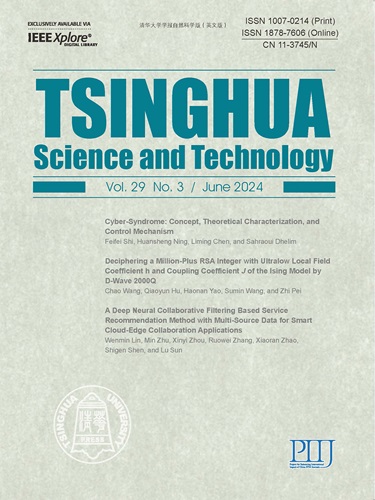EFSP-TE: End-to-End Frame-Semantic Parsing with Table Encoder
IF 3.5
1区 计算机科学
Q1 Multidisciplinary
引用次数: 0
Abstract
Frame-Semantic Parsing (FSP) aims to extract frame-semantic structures from text. The task usually involves three subtasks sequentially: Target Identification (TI), Frame Identification (Fl), and Frame Semantic Role Labeling (FSRL). The three subtasks are closely related while most previous studies model them individually, encountering error propagation and running efficiency problems. Recently, an end-to-end graph-based model is proposed to jointly process three subtasks in one model. However, it still encounters three problems: insufficient semantic modeling between targets and arguments, span missing, and lacking knowledge incorporation of FrameNet. To address the mentioned problems, this paper presents an End-to-end FSP model with Table Encoder (EFSP-TE), which models FSP as two semantically dependent region classification problems and extracts frame-semantic structures from sentences in a one-step manner. Specifically, EFSP-TE incorporates lexical unit knowledge into context encoder via saliency embedding, and develops an effective table representation learning method based on Biaffine network and multi-layer ResNet-style-CNNs (Convolutional Neural Networks), which can fully exploit word-to-word interactions and capture the information of various levels of semantic relations between targets and arguments. In addition, it adopts two separate region-based modules to obtain potential targets and arguments, followed by two interactive classification modules to predict the frames and roles for the potential targets and arguments. Experiments on two public benchmarks show that the proposed approach achieves state-of-the-art performance in end-to-end setting.端到端帧语义解析与表编码器
框架语义分析(FSP)旨在从文本中提取框架语义结构。该任务通常包括三个子任务:目标识别(TI)、框架识别(Fl)和框架语义角色标记(FSRL)。这三个子任务密切相关,但以往的研究大多是单独建模,存在误差传播和运行效率问题。最近,提出了一种端到端基于图的模型来联合处理一个模型中的三个子任务。然而,它仍然面临三个问题:目标和参数之间的语义建模不足、跨度缺失和缺乏框架网的知识整合。为了解决上述问题,本文提出了一个端到端基于表编码器(Table Encoder, EFSP-TE)的FSP模型,该模型将FSP建模为两个语义相关的区域分类问题,并以一步的方式从句子中提取框架语义结构。具体而言,EFSP-TE通过显著性嵌入将词汇单元知识整合到上下文编码器中,并基于Biaffine网络和多层resnet风格的cnn(卷积神经网络)开发了一种有效的表表示学习方法,可以充分利用词与词之间的相互作用,捕获目标和论点之间不同层次的语义关系信息。此外,它采用两个独立的基于区域的模块来获取潜在目标和参数,然后采用两个交互的分类模块来预测潜在目标和参数的框架和角色。在两个公共基准上的实验表明,该方法在端到端环境下达到了最先进的性能。
本文章由计算机程序翻译,如有差异,请以英文原文为准。
求助全文
约1分钟内获得全文
求助全文
来源期刊

Tsinghua Science and Technology
COMPUTER SCIENCE, INFORMATION SYSTEMSCOMPU-COMPUTER SCIENCE, SOFTWARE ENGINEERING
CiteScore
10.20
自引率
10.60%
发文量
2340
期刊介绍:
Tsinghua Science and Technology (Tsinghua Sci Technol) started publication in 1996. It is an international academic journal sponsored by Tsinghua University and is published bimonthly. This journal aims at presenting the up-to-date scientific achievements in computer science, electronic engineering, and other IT fields. Contributions all over the world are welcome.
 求助内容:
求助内容: 应助结果提醒方式:
应助结果提醒方式:


